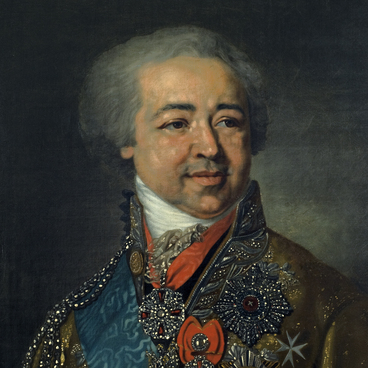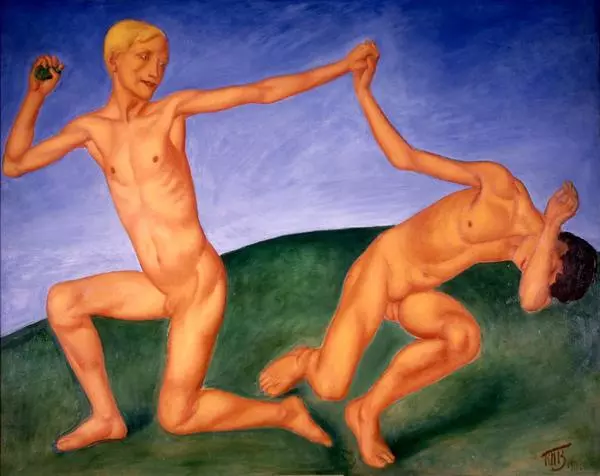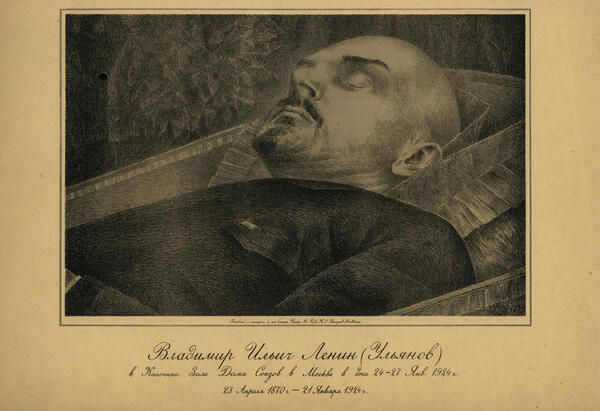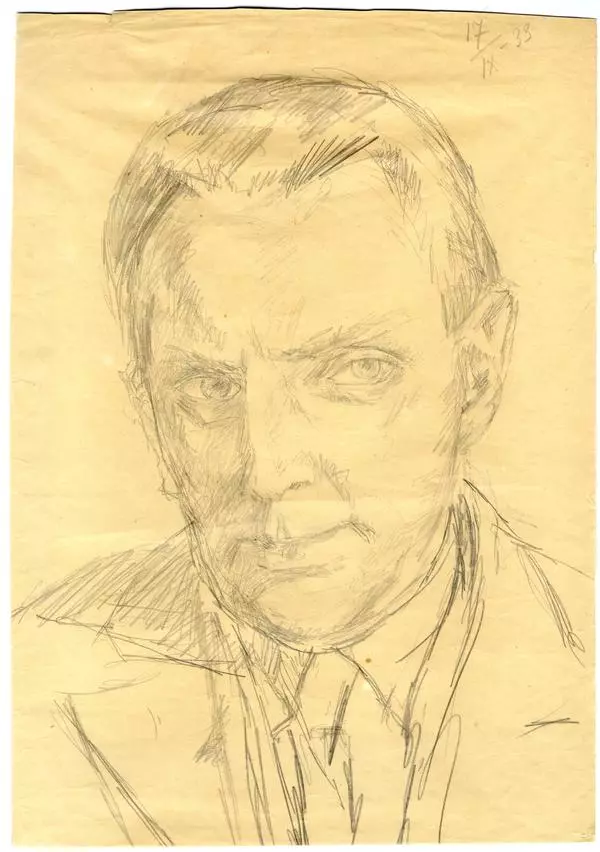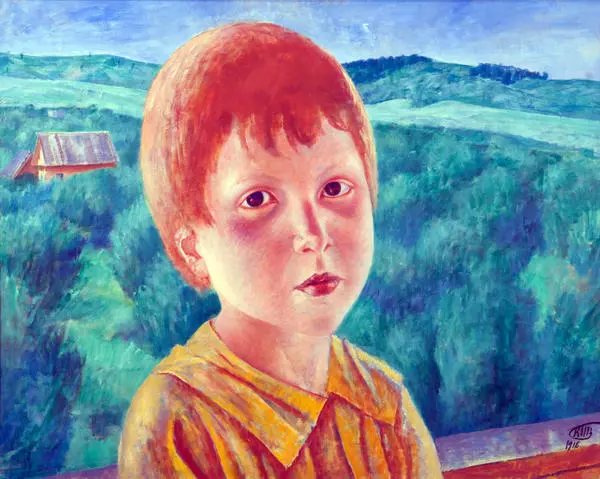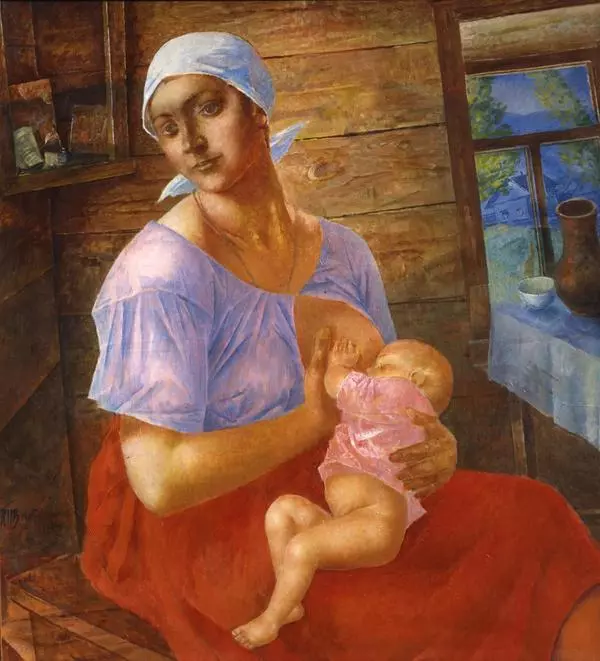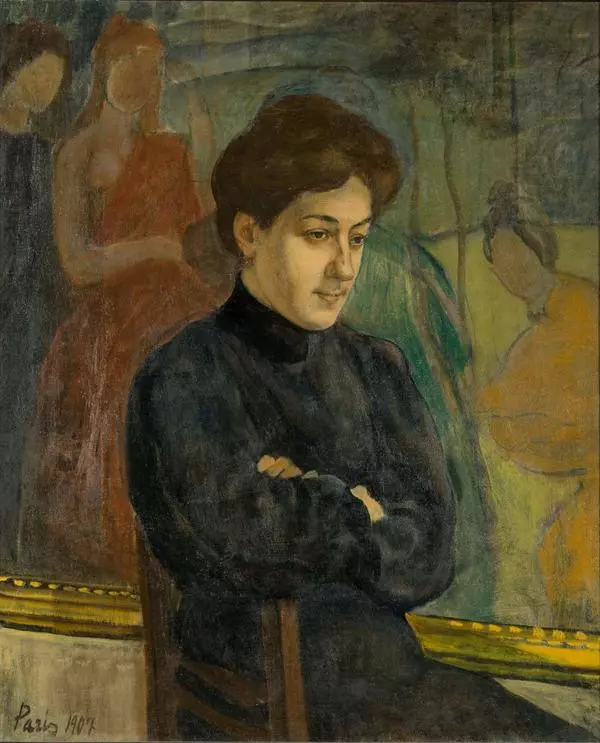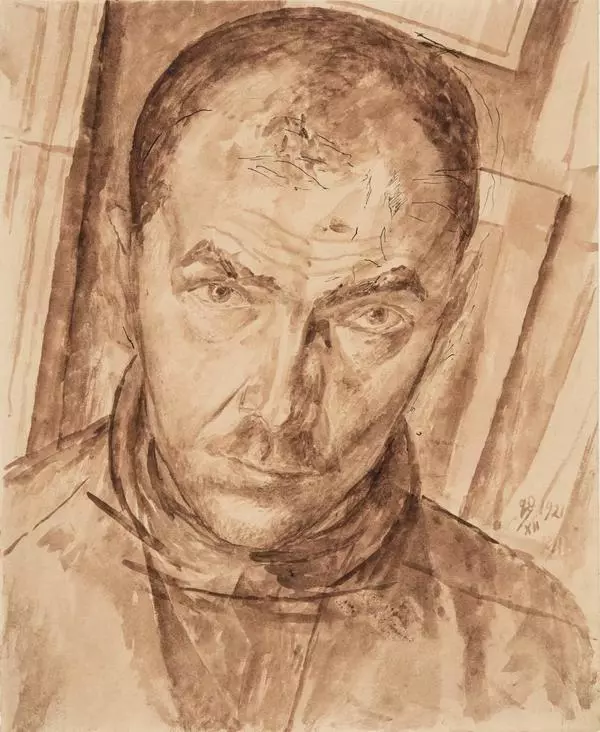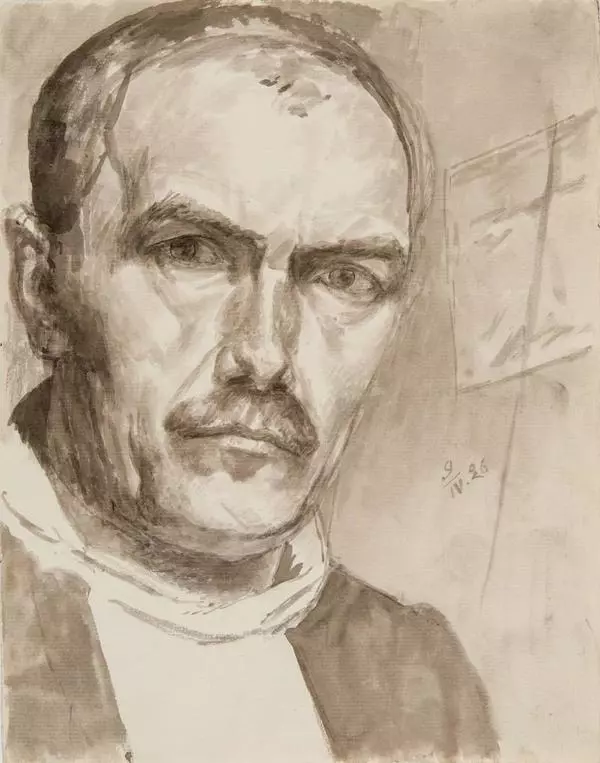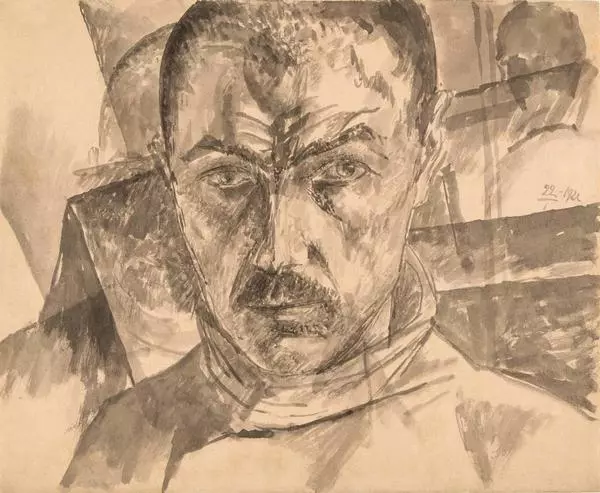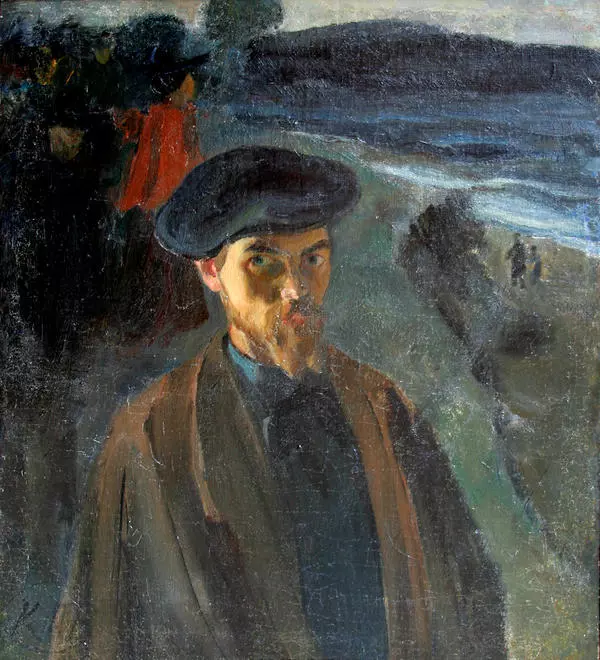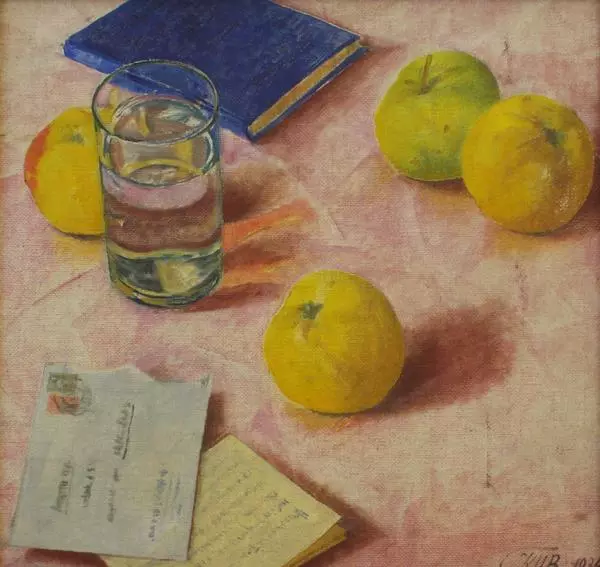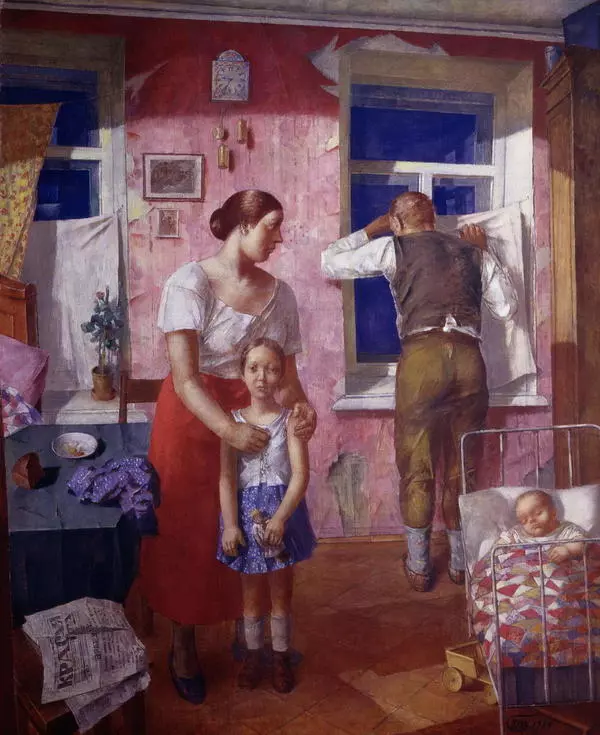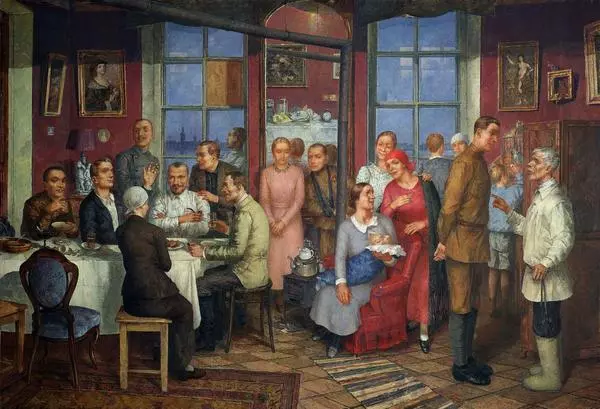KuzmA PetrOv-VOdkin met his wife in November of 1906. He was about thirty years old, and she had yet to turn 20. Before her conversion to Eastern Orthodox Christianity, the daughter of a Serbian mother and a Belgian father bore the name of Maria-Margarita Jovanovic and did not speak Russian. Throughout his life, the artist created many portraits of his beloved wife, who supported him and was his life. Painting from the NovosibIrsk State Art Museum collection had been created five years before the artist’s death and refers to the mature period of his work.
Petrov-Vodkin particularly appreciated this very portrait of his wife, who served as his permanent model for thirty years of marriage. During the early period of his creative work, the artist was under the influence of symbolist ideas. However, his painting manner changed with time and he abandoned the modernist style. This artwork reveals Petrov-Vodkin as a sophisticated and profound realist rather than a symbolist and romantic. At that time he strived to metaphysically reflect on reality. He does the same in “Portrait of M.F. Petrova-Vodkina.”
In this artwork, the artist ventured to apply the principles of artistic theory, on which he had worked in previous years. The portrait is laconic and painted in strict colors. Petrov-Vodkin combines intense nude color with a cold blue. This painting allows us to say that Russian medieval art had significantly influenced the artist’s creative work.
Maria PetrOva-VOdkina is depicted with features typical for iconographic images of female faces. We see a specific tilt of the head, indicating the contemplative character of the woman. All this reinforces the symbolism of the work. The relationship between the figure and the background is the most significant compositional focus of the portrait. The everyday items are depicted in an inclined plane and can be perceived as a metaphor for the collapse of home comfort and family life. In this crumbling world, the artist still has the hope and support in the face of his wife — the only stable image in the picture.
Petrov-Vodkin particularly appreciated this very portrait of his wife, who served as his permanent model for thirty years of marriage. During the early period of his creative work, the artist was under the influence of symbolist ideas. However, his painting manner changed with time and he abandoned the modernist style. This artwork reveals Petrov-Vodkin as a sophisticated and profound realist rather than a symbolist and romantic. At that time he strived to metaphysically reflect on reality. He does the same in “Portrait of M.F. Petrova-Vodkina.”
In this artwork, the artist ventured to apply the principles of artistic theory, on which he had worked in previous years. The portrait is laconic and painted in strict colors. Petrov-Vodkin combines intense nude color with a cold blue. This painting allows us to say that Russian medieval art had significantly influenced the artist’s creative work.
Maria PetrOva-VOdkina is depicted with features typical for iconographic images of female faces. We see a specific tilt of the head, indicating the contemplative character of the woman. All this reinforces the symbolism of the work. The relationship between the figure and the background is the most significant compositional focus of the portrait. The everyday items are depicted in an inclined plane and can be perceived as a metaphor for the collapse of home comfort and family life. In this crumbling world, the artist still has the hope and support in the face of his wife — the only stable image in the picture.
